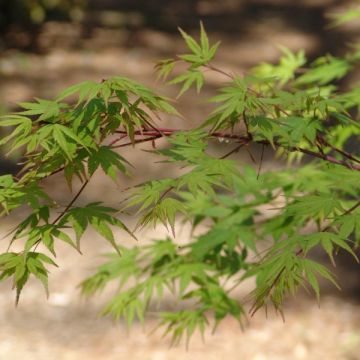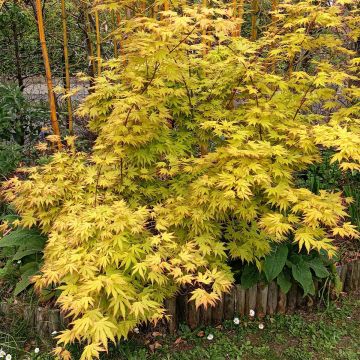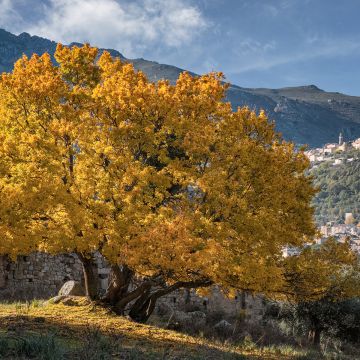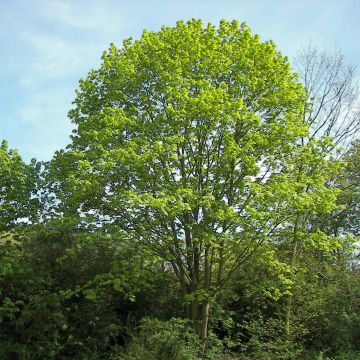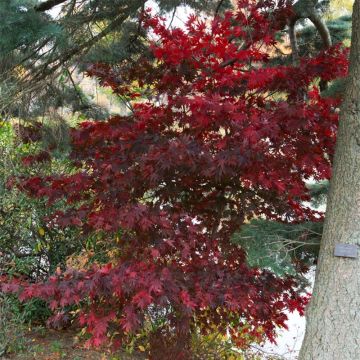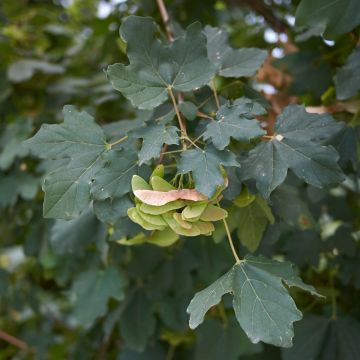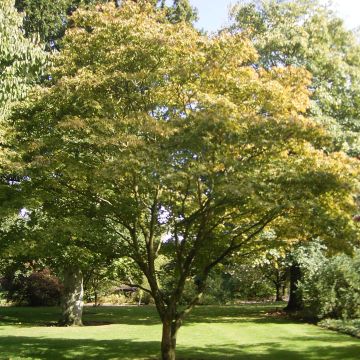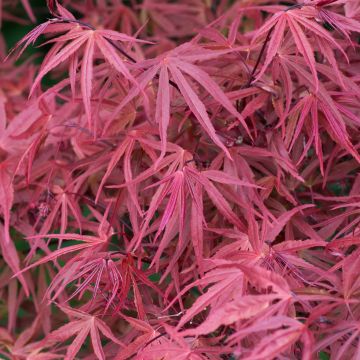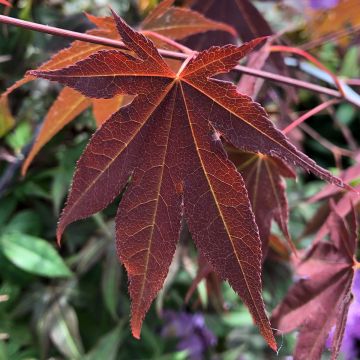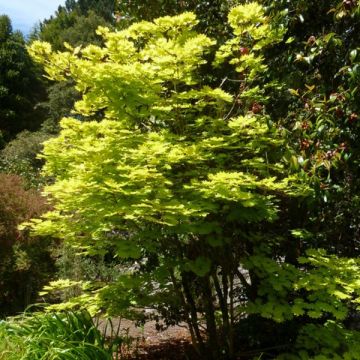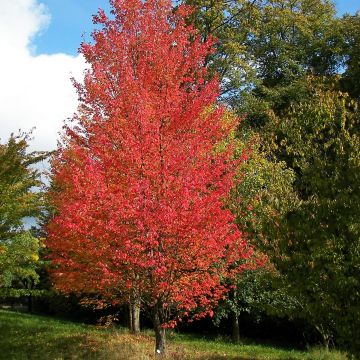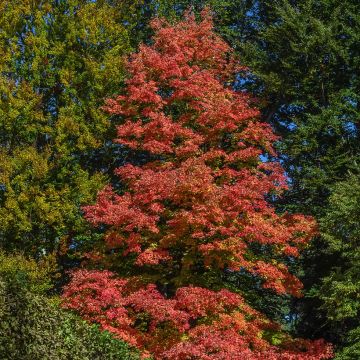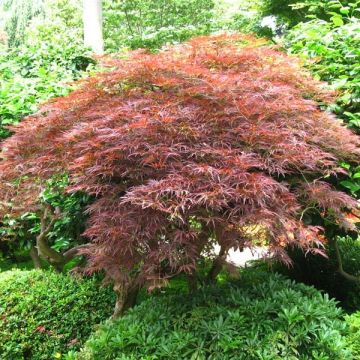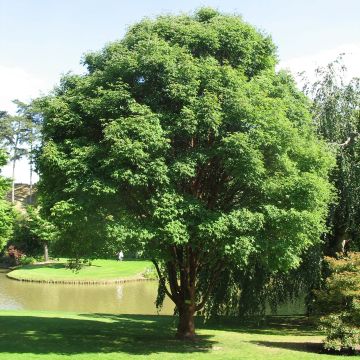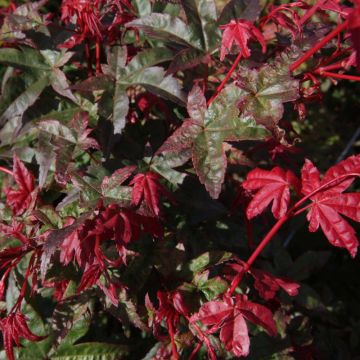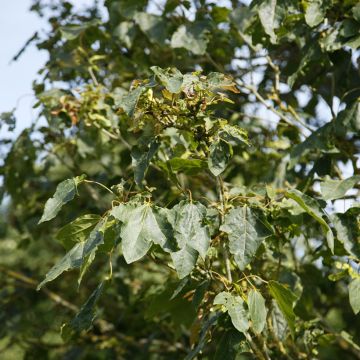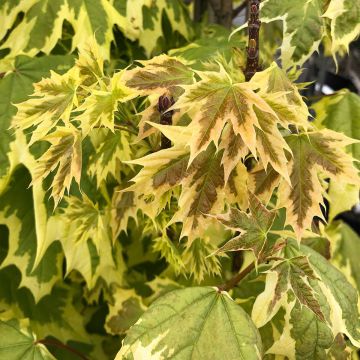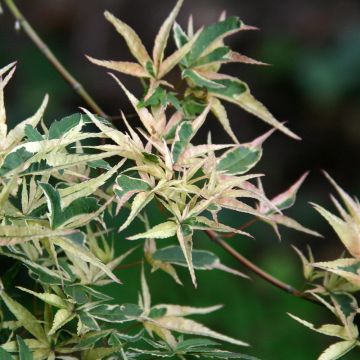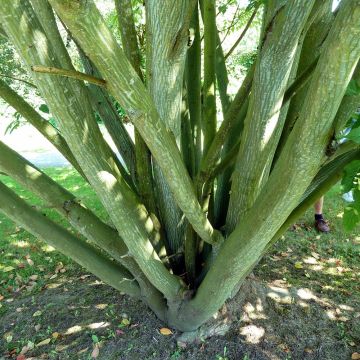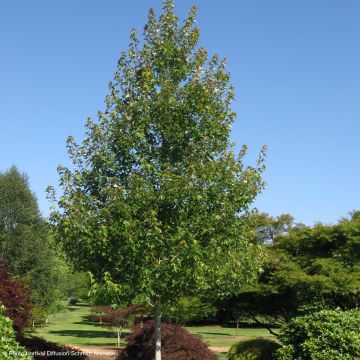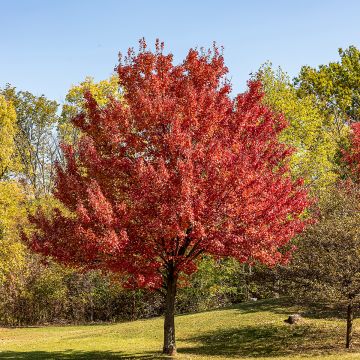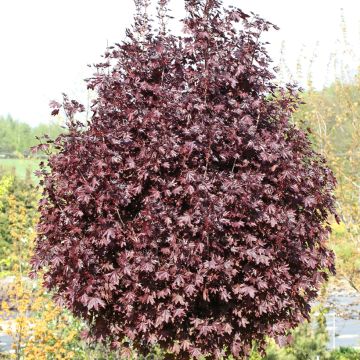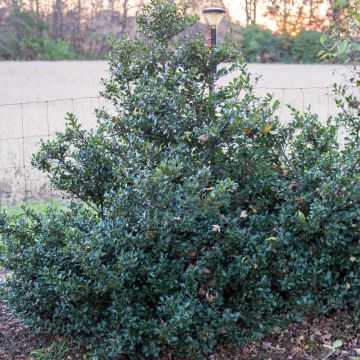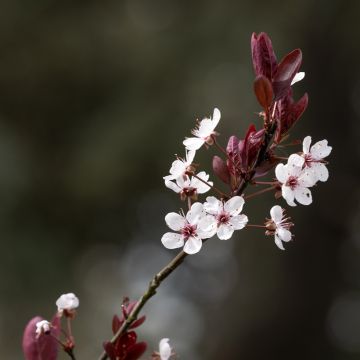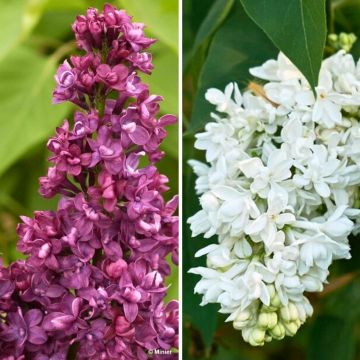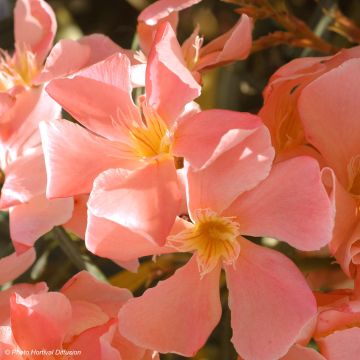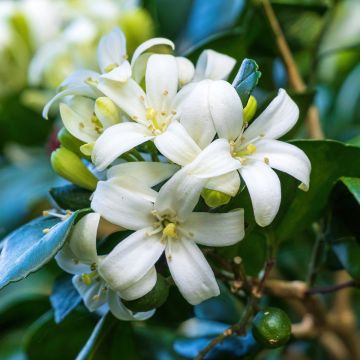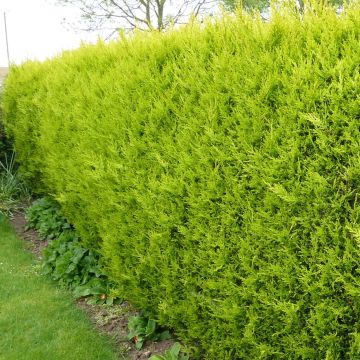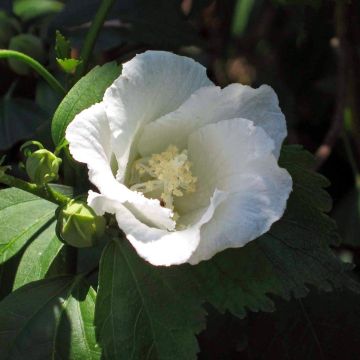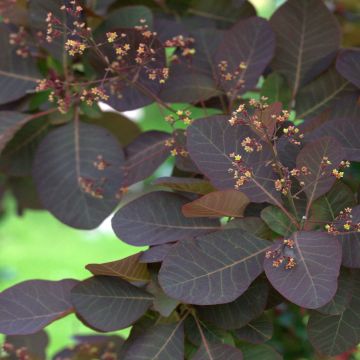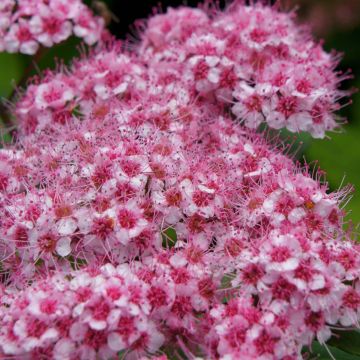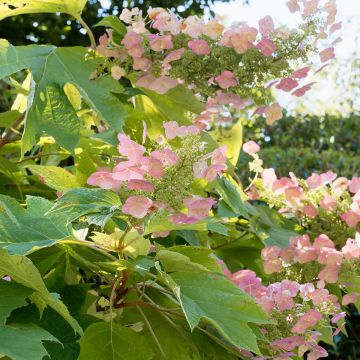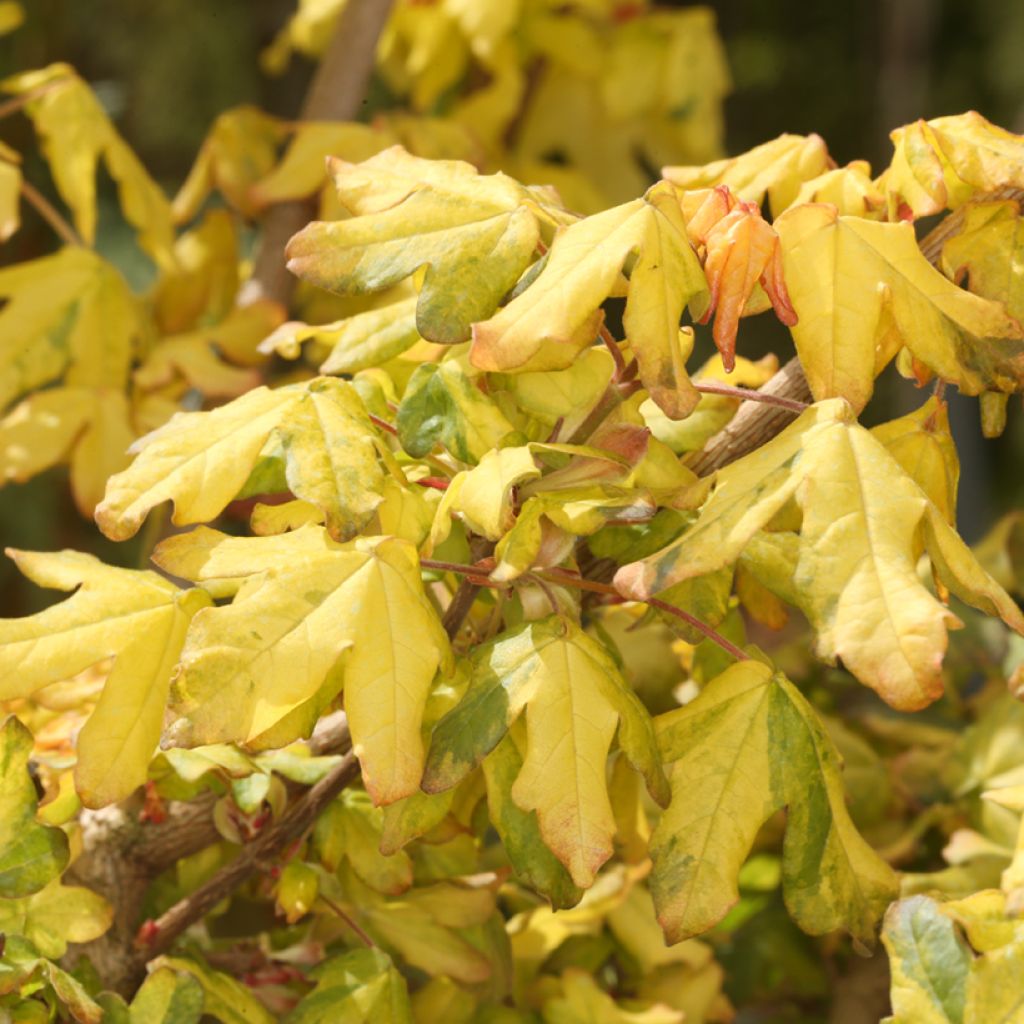

Acer campestre Magic Spring - Field Maple
Acer campestre Magic Spring - Field Maple
Acer campestre Magic Spring
Field Maple, Common Maple
Why not try an alternative variety in stock?
View all →This plant carries a 24 months recovery warranty
More information
We guarantee the quality of our plants for a full growing cycle, and will replace at our expense any plant that fails to recover under normal climatic and planting conditions.
From €5.90 for pickup delivery and €6.90 for home delivery
Express home delivery from €8.90.
Delivery to Corse prohibited: UE law prohibits the import of this plant from mainland France to Corse as part of the fight against Xylella fastidiosa. Please accept our sincere apologies.
More information
Does this plant fit my garden?
Set up your Plantfit profile →
Description
Acer campestre 'Magic Spring' is a cultivar of field maple that stands out for its magnificent variegated spring foliage. Slow-growing and not very large, with a slightly irregular rounded habit, it catches the eye from spring to autumn with its changing colours. Give it a prominent place, preferably in partial shade and rich, moist soil. This wonderful variety is suitable for gardens of all sizes and adapts well to most regions.
Acer campestre 'Magic Spring' is a horticultural selection, a seedling of the cultivar 'Royal Ruby'. This cultivar is characterised by its small size and variegated foliage that changes colour from spring to autumn. It grows at a rate of about 40 to 50 cm per year, and a mature specimen rarely exceeds 3 m in all directions. The tree develops a wide, dense, rounded, slightly irregular crown. The young spring leaves have an intense red colour, which gradually turns orange and becomes marbled, first green-yellow, then green-white in summer. The foliage colouration is most impressive in late spring and early summer when the tree bears both mature and variegated leaves, as well as vibrant young shoots, contrasting with the light green background. The very discreet flowering occurs in spring, at the same time as the leaves emerge. The small flowers are greenish and clustered in corymbs. In late summer, the fruits called samaras add extra attraction: they are large, bright red, winged fruits that are highly visible against the foliage. Autumn is the third period of extraordinary beauty for this tree when its leaves turn warm and orange before falling.
Native to Europe, Asia Minor, and North Africa, Acer campestre is a forest tree rather than a field tree. Over time, this species, which can live well over a century, can develop multiple intertwined trunks, each carrying a dense crown. The slightly glossy foliage of this deciduous maple consists of small, 5 to 10 cm long leaves with 3 to 5 lobes. The milky sap that oozes from the leaves is often observed in this species. Field maple has the hardest wood of any maple species. Its bark is pale grey and fissured. The branches of young trees often have corky, ribbed, insulating bark, used to make perches for poultry, which has earned it the popular name of 'chicken wood'.
Acer campestre 'Magic Spring' is used as a specimen tree in gardens of all sizes, but also in a mixed hedge. It can be highlighted in front of a backdrop of conifers with simple and dark foliage. It can also be associated, in a field hedge, with deciduous spindle trees (Euonymus 'Red Cascade'), large smoke bushes ('Royal Purple', 'Grace'), a botanical rose 'Californica Plena', and hawthorns, for example. Plant shade-loving perennials at its base (dead nettles, Geranium macrorrhizum, Black Ophiopogon) to enjoy its magnificent colours.
Report an error about the product description
Plant habit
Flowering
Foliage
Botanical data
Acer
campestre
Magic Spring
Sapindaceae
Field Maple, Common Maple
Cultivar or hybrid
Other Acer - Maple tree
Planting and care
Acer campestre 'Magic Spring' is best planted in spring or autumn in any deep, fairly rich soil, in a sunny non-scorching or partially shaded location. Its colours will be more pronounced in soil rich in humus, not too chalky and not too dry. Once well-rooted, it does not require watering in summer in most regions and requires no maintenance. Beware of strong winds. Keep the soil moist during the first two summers after planting. Mulching can be beneficial to maintain good soil moisture.
Planting period
Intended location
Care
This item has not been reviewed yet - be the first to leave a review about it.
Hedge shrubs
Haven't found what you were looking for?
Hardiness is the lowest winter temperature a plant can endure without suffering serious damage or even dying. However, hardiness is affected by location (a sheltered area, such as a patio), protection (winter cover) and soil type (hardiness is improved by well-drained soil).

Photo Sharing Terms & Conditions
In order to encourage gardeners to interact and share their experiences, Promesse de fleurs offers various media enabling content to be uploaded onto its Site - in particular via the ‘Photo sharing’ module.
The User agrees to refrain from:
- Posting any content that is illegal, prejudicial, insulting, racist, inciteful to hatred, revisionist, contrary to public decency, that infringes on privacy or on the privacy rights of third parties, in particular the publicity rights of persons and goods, intellectual property rights, or the right to privacy.
- Submitting content on behalf of a third party;
- Impersonate the identity of a third party and/or publish any personal information about a third party;
In general, the User undertakes to refrain from any unethical behaviour.
All Content (in particular text, comments, files, images, photos, videos, creative works, etc.), which may be subject to property or intellectual property rights, image or other private rights, shall remain the property of the User, subject to the limited rights granted by the terms of the licence granted by Promesse de fleurs as stated below. Users are at liberty to publish or not to publish such Content on the Site, notably via the ‘Photo Sharing’ facility, and accept that this Content shall be made public and freely accessible, notably on the Internet.
Users further acknowledge, undertake to have ,and guarantee that they hold all necessary rights and permissions to publish such material on the Site, in particular with regard to the legislation in force pertaining to any privacy, property, intellectual property, image, or contractual rights, or rights of any other nature. By publishing such Content on the Site, Users acknowledge accepting full liability as publishers of the Content within the meaning of the law, and grant Promesse de fleurs, free of charge, an inclusive, worldwide licence for the said Content for the entire duration of its publication, including all reproduction, representation, up/downloading, displaying, performing, transmission, and storage rights.
Users also grant permission for their name to be linked to the Content and accept that this link may not always be made available.
By engaging in posting material, Users consent to their Content becoming automatically accessible on the Internet, in particular on other sites and/or blogs and/or web pages of the Promesse de fleurs site, including in particular social pages and the Promesse de fleurs catalogue.
Users may secure the removal of entrusted content free of charge by issuing a simple request via our contact form.
The flowering period indicated on our website applies to countries and regions located in USDA zone 8 (France, the United Kingdom, Ireland, the Netherlands, etc.)
It will vary according to where you live:
- In zones 9 to 10 (Italy, Spain, Greece, etc.), flowering will occur about 2 to 4 weeks earlier.
- In zones 6 to 7 (Germany, Poland, Slovenia, and lower mountainous regions), flowering will be delayed by 2 to 3 weeks.
- In zone 5 (Central Europe, Scandinavia), blooming will be delayed by 3 to 5 weeks.
In temperate climates, pruning of spring-flowering shrubs (forsythia, spireas, etc.) should be done just after flowering.
Pruning of summer-flowering shrubs (Indian Lilac, Perovskia, etc.) can be done in winter or spring.
In cold regions as well as with frost-sensitive plants, avoid pruning too early when severe frosts may still occur.
The planting period indicated on our website applies to countries and regions located in USDA zone 8 (France, United Kingdom, Ireland, Netherlands).
It will vary according to where you live:
- In Mediterranean zones (Marseille, Madrid, Milan, etc.), autumn and winter are the best planting periods.
- In continental zones (Strasbourg, Munich, Vienna, etc.), delay planting by 2 to 3 weeks in spring and bring it forward by 2 to 4 weeks in autumn.
- In mountainous regions (the Alps, Pyrenees, Carpathians, etc.), it is best to plant in late spring (May-June) or late summer (August-September).
The harvesting period indicated on our website applies to countries and regions in USDA zone 8 (France, England, Ireland, the Netherlands).
In colder areas (Scandinavia, Poland, Austria...) fruit and vegetable harvests are likely to be delayed by 3-4 weeks.
In warmer areas (Italy, Spain, Greece, etc.), harvesting will probably take place earlier, depending on weather conditions.
The sowing periods indicated on our website apply to countries and regions within USDA Zone 8 (France, UK, Ireland, Netherlands).
In colder areas (Scandinavia, Poland, Austria...), delay any outdoor sowing by 3-4 weeks, or sow under glass.
In warmer climes (Italy, Spain, Greece, etc.), bring outdoor sowing forward by a few weeks.

































